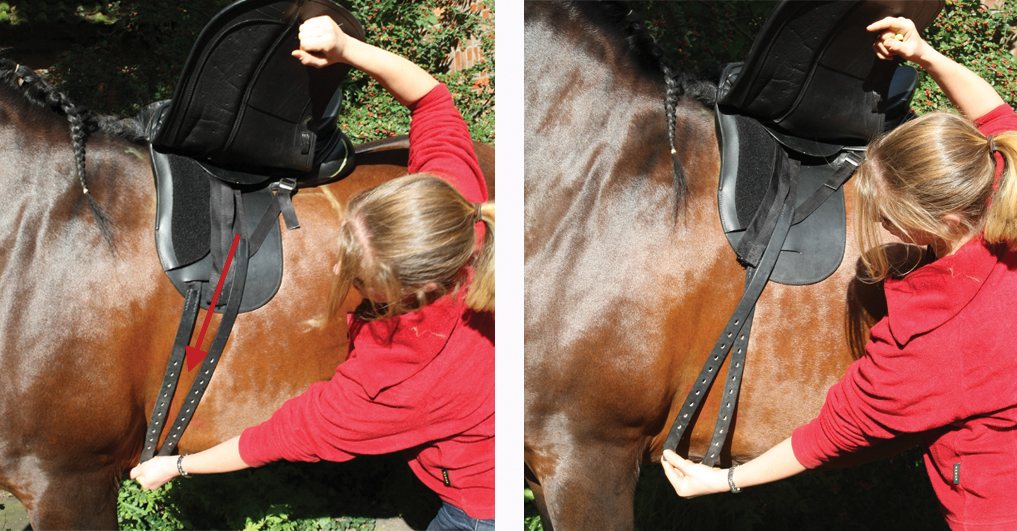Saddle Fit and Billet Alignment – Tip 5
Does your saddle slide forward no matter what kind of girth or saddle pad you use? This is one of the most common problems my clients approach me with, and I know how frustrating this can be. I know there are a number of ‘anatomically correct’ girths now available on the market – they can be more or less effective, if you take the following points into consideration when making your choice of girth. It all begins with the saddle.
Have you ever had to stop in the middle of your ride and reset your saddle because it has moved forward onto your horse’s shoulders? This is a common problem, and it is often caused by improper billet alignment. Unless the billets on your saddle are positioned correctly, your saddle will not stay in its proper place on your horse’s back. And no matter how many times you stop and reset the saddle, what kind of saddle pad you use, or what shape girth you use, your saddle will continue to slide forward.
How do you know if the billets on your saddle are aligned properly for your horse? Place your saddle on your horse’s back, making sure that it is correctly situated behind his shoulder. The billets should hang perpendicular to the ground, and also should hang in the girth area. If the billets hang too far back, gravity will pull the billets forward into the girth area. The billets will, of course, pull the girth and the entire saddle along with them. The girth will always find its position at the narrowest point of the rib cage behind your horse’s elbow, and an unfortunate result is that the saddle either gets driven forward into your horse’s shoulders, or is driven clear on top of his shoulders.

Why is this bad? The horse’s shoulder blade (scapula) consists of both bone and cartilage. At the very least, a saddle that is pulled forward onto his shoulders acts like a straitjacket: your horse will be unable to move freely through his shoulders and his movement will be compromised, sometimes severely.
At worst, a saddle that constantly drives into your horse’s shoulders first will produce a buildup of scar tissue on his scapula. If the problem persists over the long-term, the tree points of the saddle will begin to actually chip away the bone and cartilage. Horses with this kind of irreversible damage often have telltale “holes,” particularly on their left shoulder blade, and frequently have had to be retired due to persistent unsoundness.
If the billets hang too far forward into your horse’s elbow area, they may make him sore in the elbows. And once again, gravity will drag them (and the girth and saddle along with them) back into the girth area. You might think that this is not a problem because at least your horse’s shoulders are free. However, there will be too much pressure on the panels at the rear of the saddle. Too much of the rider’s weight will be on the horse’s lumbar and kidney area. In the case of a mare, there will be excessive pressure on her ovaries. This is especially problematic when the mare is in season, and during these times she may show extreme discomfort or resistance when being saddled and ridden.
What causes improper billet alignment? Frequently, the problem is that either the width or the angle, or both the width and the angle, of your saddle’s tree is not the correct size for your horse.
©2016 Saddlefit4 Life® All Rights Reserved
